Sanae Takaichi and the Future of U.S.–Japan Relations
Introduction – The Rise of Sanae Takaichi and Why the U.S. Matters
In 2025, Japan stands at a defining crossroads in both politics and diplomacy. With Sanae Takaichi emerging as one of the most influential conservative figures in the Liberal Democratic Party (LDP), global attention has turned to how her leadership could reshape U.S.–Japan relations. Her rapid political rise represents not only a generational shift within Japan’s ruling establishment but also a test of how far Japan can assert strategic autonomy while remaining anchored to its most vital ally — the United States.
The U.S.–Japan alliance has been called the “cornerstone of peace and stability in the Indo-Pacific.” Yet, under Takaichi’s pragmatic but nationalist leadership style, that cornerstone may be re-examined. Rather than simply following Washington’s lead, she envisions Japan as an equal strategic partner — a nation capable of defending its own interests, protecting critical technologies, and building a regional framework that extends beyond bilateral dependency. This nuanced position has sparked both optimism and unease among foreign policy analysts.
For decades, Japan’s post-war diplomacy relied on the United States for security guarantees and military deterrence. But as China’s military buildup accelerates and North Korea continues its missile provocations, Tokyo’s security calculus is shifting rapidly. Takaichi has repeatedly argued that Japan must be “strong enough to defend itself” and that alliance credibility depends on mutual respect and shared responsibility. Her rhetoric signals a subtle but important change — a more balanced and self-reliant Japan within the alliance framework.
Economically, the Takaichi era also promises a stronger emphasis on economic security. She has prioritized securing Japan’s semiconductor industry, safeguarding data infrastructure, and coordinating technology standards with the U.S. while simultaneously promoting Japanese technological sovereignty. In her view, dependence is not a strategy; resilience is. That philosophy underpins much of her foreign and economic policy thinking.
At the same time, Takaichi’s conservative worldview introduces complexities into Japan–U.S. diplomacy. Her support for constitutional revision, her cautious stance on historical reconciliation, and her “Japan First” tone have drawn comparisons to previous right-leaning administrations. Nevertheless, her combination of realism and patriotism could allow Japan to navigate an increasingly unstable Indo-Pacific region with greater confidence and purpose.
In short, Sanae Takaichi represents a turning point. Her leadership is not about rejecting the United States, but about redefining the alliance for a new era — an era in which Japan seeks to be a proactive shaper of regional order, not merely a reactive participant. How she balances national autonomy with alliance commitment will define Japan’s diplomatic identity for decades to come.
In the following sections, we will explore how Takaichi’s ideology, policy priorities, and regional strategies are reshaping the contours of the U.S.–Japan relationship — from defense and economics to diplomacy and beyond.
Japan’s Political Shift – Conservatism and Strategic Autonomy
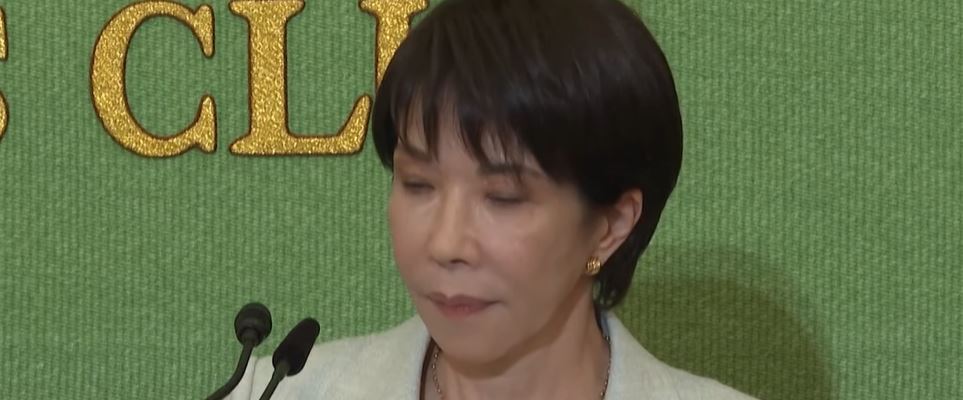
Over the past decade, Japan’s political landscape has undergone a profound transformation. The rise of conservatism within the Liberal Democratic Party (LDP) — coupled with growing public concern about national defense and identity — has set the stage for a new wave of leadership. At the forefront of this shift stands Sanae Takaichi, a politician who blends ideological conviction with strategic calculation. Her approach reflects a deeper trend in Japanese politics: a movement toward strategic autonomy and national resilience.
Takaichi’s conservatism is rooted in her long political career and mentorship under former Prime Minister Shinzo Abe. While Abe’s tenure focused on strengthening Japan’s security and revising its pacifist constitution, Takaichi has taken those ideas further — emphasizing the restoration of Japan’s “sovereign decision-making power.” She argues that Japan should be capable of protecting its own interests without depending excessively on the United States, even as it values the U.S.–Japan alliance as the cornerstone of its diplomacy.
Her ideology can best be described as “realist nationalism.” Rather than isolationism, it is an effort to ensure Japan’s independence in a world of shifting power dynamics. This includes reinterpreting Article 9 of the Constitution, expanding the Self-Defense Forces’ operational capacity, and integrating new security technologies into national defense. These policies align closely with public sentiment, as opinion polls show increasing support for a stronger national defense in light of regional threats from China and North Korea.
Politically, Takaichi represents the more assertive wing of the LDP. She advocates for constitutional reform, enhanced defense spending, and tighter control over strategic industries. Her vision also extends to the cultural sphere — promoting respect for Japan’s history, traditions, and sovereignty. This blend of security-driven and identity-based conservatism resonates with voters who feel Japan’s postwar pacifism has become outdated in the face of modern geopolitical realities.
However, her rise also marks a delicate balance within Japan’s foreign policy. While conservative, Takaichi is not anti-American. She has consistently expressed admiration for the United States’ democratic institutions and its role in maintaining Indo-Pacific stability. Yet, she believes Japan must play an equal and responsible role within the alliance, rather than a dependent one. This means increasing Japan’s defense spending to over 2% of GDP — a goal already in progress — and expanding joint research with the U.S. on advanced technologies such as AI, cyber defense, and quantum security.
Her emphasis on strategic autonomy is not about distancing Japan from Washington; it is about elevating Tokyo’s position to that of a co-architect of regional security. By encouraging partnerships with Taiwan, Australia, and India, Takaichi envisions a more diversified network of alliances — a move that complements, rather than competes with, the U.S.–Japan relationship. This approach reflects a broader recognition that the Indo-Pacific is becoming too complex for bilateral solutions alone.
Yet, such an assertive vision also invites caution. Some analysts warn that a strong nationalist agenda could strain relations with neighboring countries like South Korea or China, potentially complicating U.S. diplomacy in the region. Nevertheless, Takaichi’s supporters argue that her firm stance enhances Japan’s credibility and deterrence — qualities that Washington itself values in a reliable ally.
In essence, Sanae Takaichi’s political philosophy represents Japan’s ongoing evolution from a postwar pacifist state to a proactive security partner. Her brand of conservatism emphasizes dignity, resilience, and independence — principles that align with the modern world’s demand for both strength and cooperation. As Japan asserts a clearer national identity, its partnership with the U.S. may enter a new era of balance — one defined not by hierarchy, but by shared responsibility and mutual respect.
Security Alliance – The U.S.–Japan Defense Framework Under Takaichi

The U.S.–Japan alliance has long been the foundation of Japan’s national defense strategy. Since the signing of the 1960 Security Treaty, the United States has maintained a forward military presence in Japan, providing extended deterrence through its nuclear and conventional capabilities. However, under Sanae Takaichi’s leadership, this framework is being redefined — not to weaken the alliance, but to make it more balanced, modern, and reciprocal.
Takaichi believes that security cooperation must evolve with the times. She has repeatedly stated that Japan can no longer rely solely on U.S. protection in an era marked by China’s military expansion and North Korea’s missile provocations. Instead, she argues that Japan must become a more capable security actor, one that can defend itself and actively contribute to regional stability. This is not merely a slogan; it is the core of her defense policy vision.
In recent policy discussions, Takaichi has emphasized three main pillars of Japan’s new defense approach: self-defense readiness, joint deterrence with the United States, and multilateral security engagement. She has pushed for the deployment of counterstrike capabilities — including long-range missiles — a move that marks a significant shift from Japan’s traditional defensive posture. This capability, she argues, strengthens deterrence and aligns with U.S. strategic objectives in the Indo-Pacific region.
Her plan also involves deeper integration between the Self-Defense Forces (SDF) and the U.S. military. Joint exercises, shared intelligence frameworks, and command coordination have been expanding since 2023, but under Takaichi, these will accelerate further. She envisions a future where U.S. and Japanese forces operate more seamlessly in crisis scenarios, particularly in defense of the Nansei Islands and the Taiwan Strait — both key flashpoints in regional security.
One of Takaichi’s notable policy contributions is the establishment of an “Integrated Security Council” model that brings together defense, technology, and economic security agencies under a unified command structure. This reflects her recognition that modern warfare is no longer limited to military power alone — it also involves cybersecurity, data protection, and supply chain resilience. By coordinating these domains, Japan aims to strengthen deterrence while protecting its critical national infrastructure from external threats.
However, this growing assertiveness also raises questions about Japan’s constitutional constraints. Critics argue that Takaichi’s push for counterstrike capabilities and greater autonomy could stretch the interpretation of Article 9. In response, she insists that Japan’s constitution allows for “minimum necessary defense,” and that adapting to new threats is both legal and essential. Her position reflects a pragmatic balance between pacifist traditions and strategic realism — a balance that resonates with a majority of Japanese citizens, according to recent polls by The Yomiuri Shimbun and NHK.
For the United States, Takaichi’s assertive stance is largely welcome. Washington has long encouraged Japan to take on a larger security role in the Indo-Pacific, especially as the U.S. faces global commitments in Europe and the Middle East. Under her leadership, Japan’s increased defense budget — now exceeding 2% of GDP — and new capabilities contribute to burden-sharing and regional deterrence. This, in turn, strengthens the alliance’s overall credibility against potential adversaries.
Nevertheless, some challenges remain. Japan’s domestic debates on nuclear sharing, defense spending transparency, and the U.S. troop presence in Okinawa could complicate future coordination. Takaichi must balance the alliance’s operational needs with the public’s sensitivity to military expansion. Her success will depend on maintaining public trust while advancing Japan’s defense modernization goals.
Ultimately, Sanae Takaichi’s defense policy represents a significant evolution in the U.S.–Japan security framework. It reaffirms the alliance as a mutual partnership rather than a dependency. By promoting readiness, integration, and innovation, she aims to make Japan a security provider in the Indo-Pacific — a partner that complements, not merely supports, the United States. This recalibration may well define the next chapter of regional stability in East Asia.
Economic Security and Technology Cooperation
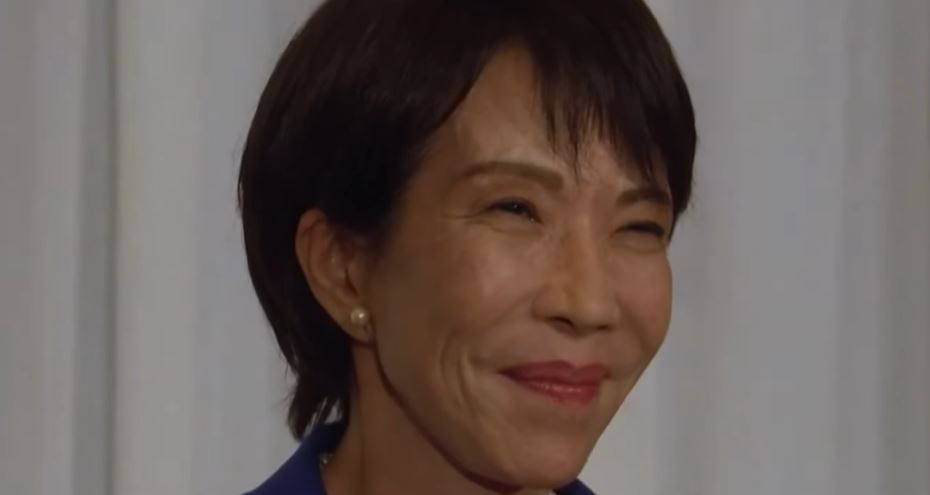
In today’s interconnected world, economic security has become as critical as military strength. For Sanae Takaichi, protecting Japan’s economic foundations is an inseparable part of national defense. Her approach links technological sovereignty, supply chain stability, and international cooperation — especially with the United States — as key pillars of Japan’s long-term strategy. This philosophy reflects her tenure as Japan’s first Minister of State for Economic Security, where she oversaw the creation of Japan’s Economic Security Promotion Act in 2022.
Under Takaichi’s leadership, Japan’s technology cooperation with the U.S. has entered a new phase. Both nations share a common concern: safeguarding strategic industries like semiconductors, quantum computing, and artificial intelligence (AI) from external threats, particularly from China’s growing influence. To address this, Japan and the U.S. have formed joint research frameworks to co-develop resilient chip supply chains and establish trusted manufacturing ecosystems. This partnership is not just about economics — it is a strategic effort to preserve technological dominance in the Indo-Pacific.
Takaichi’s concept of economic security rests on three strategic goals: protection, diversification, and innovation. Protection involves securing critical technologies and preventing their misuse by hostile actors. Diversification means reducing Japan’s overreliance on single-source imports for energy, rare earth minerals, and semiconductors. Innovation, meanwhile, focuses on fostering domestic R&D and startups capable of competing in next-generation technologies. These three layers together form the backbone of her economic resilience policy.
A major highlight of her policy is the U.S.–Japan Semiconductor Partnership, which includes joint investments in advanced manufacturing facilities in Hokkaido and Kyushu. This initiative aligns with Washington’s CHIPS and Science Act, enabling both countries to coordinate on chip design, export controls, and supply-chain security. By reducing dependence on Taiwan and mainland China, Takaichi aims to make Japan a reliable hub for high-end chip production — a move that enhances both national security and industrial competitiveness.
Her government also promotes AI and cybersecurity cooperation with the U.S., focusing on ethical AI governance, quantum encryption, and defense applications. In 2024, Japan and the U.S. launched a joint task force on “AI for National Resilience,” emphasizing how technology can strengthen disaster response, critical infrastructure, and cyber deterrence. This reflects Takaichi’s belief that future security will depend on technological superiority as much as on traditional military capabilities.
Yet, her assertive economic policies have not been without challenges. Some Japanese business leaders express concern that tight export controls could limit access to key markets, while U.S. firms push for greater reciprocity in tech transfers. Takaichi acknowledges these tensions but argues that long-term stability outweighs short-term profit. Her stance aligns with a growing global consensus that economic independence is a form of national defense.
Furthermore, Japan’s collaboration with the U.S. extends beyond technology into energy and digital infrastructure. Both nations are investing in next-generation nuclear technology, clean hydrogen production, and 5G/6G networks. By building secure communication and energy grids, Takaichi aims to shield Japan from geopolitical disruptions that could cripple supply chains or digital networks. Such initiatives reinforce Japan’s position as a trusted partner in the global innovation ecosystem.
Ultimately, Sanae Takaichi’s economic security strategy demonstrates a pragmatic blend of nationalism and globalism. While prioritizing Japan’s sovereignty over key technologies, she recognizes that alliance cooperation — particularly with the United States — is indispensable for maintaining stability and competitiveness. Through coordinated investment, shared innovation, and strategic foresight, Japan under Takaichi is not retreating from globalization; it is redefining it on its own terms.
Potential Tensions – Trade, Autonomy, and Historical Issues
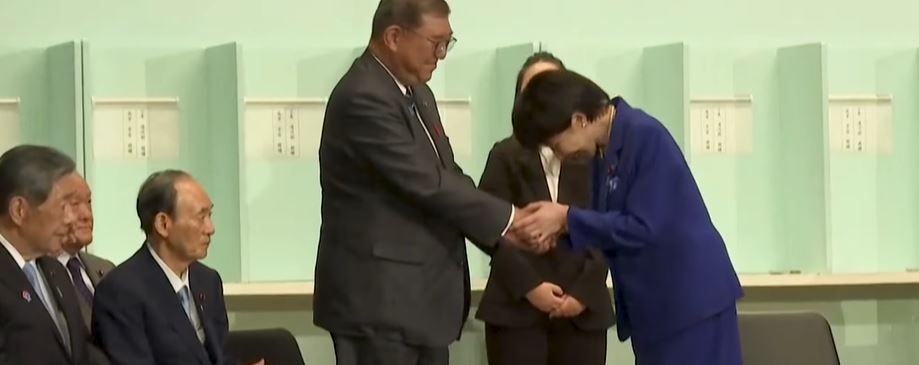
While Sanae Takaichi’s leadership has revitalized the U.S.–Japan relationship, her pursuit of autonomy and conservative values introduces areas of friction that could test the alliance. These tensions are not about hostility, but about redefining boundaries in trade, diplomacy, and national identity. In this sense, the Takaichi era represents both the alliance’s greatest opportunity and its most delicate balancing act.
One of the key areas of potential conflict lies in trade and economic policy. Japan’s economic model — export-driven, innovation-based, and highly regulated — often collides with Washington’s market-oriented approach. Takaichi has voiced concerns about what she calls “unbalanced trade expectations,” arguing that Japan’s access to U.S. agricultural markets or defense contracts should be as open as America’s access to Japan’s tech and automotive sectors. Her administration has called for more reciprocal trade agreements that respect both sides’ industrial interests.
Moreover, Japan’s growing emphasis on economic sovereignty has raised eyebrows in Washington. Takaichi’s policies encourage domestic manufacturing, resource diversification, and government oversight of strategic industries — moves that some U.S. officials interpret as protectionist. However, she frames these measures as necessary for national security, especially in an era of global supply chain vulnerabilities and increasing geopolitical competition. Her stance is consistent with her broader theme: autonomy within partnership.
Beyond economics, the realm of historical and cultural diplomacy presents another layer of complexity. Takaichi’s conservative background includes positions that can be controversial internationally — such as her visits to the Yasukuni Shrine and her cautious stance on Japan’s wartime legacy. While these acts are framed domestically as expressions of patriotism and remembrance, they can strain Japan’s relations with neighboring countries like South Korea and China, and by extension, complicate U.S. regional diplomacy. American officials, mindful of coalition-building in East Asia, have occasionally urged Japan to adopt a more reconciliatory tone.
At the same time, Takaichi is careful to distinguish patriotism from revisionism. She emphasizes that honoring Japan’s fallen soldiers does not negate historical responsibility, and that modern Japan should be proud of its democratic and peaceful achievements. Her message to the international community is one of confidence: Japan can face its past without being defined by it. This nuanced position helps her maintain domestic support while minimizing friction with the United States.
Diplomatic autonomy is another area of debate. While Takaichi reaffirms the U.S.–Japan alliance as indispensable, she also seeks to expand Japan’s influence beyond the bilateral framework. Her active engagement with Taiwan, India, and Australia under the concept of a “free and open Indo-Pacific” demonstrates this shift. Some in Washington welcome this diversification as burden-sharing, but others worry that Tokyo might act independently in ways that complicate coordinated U.S. strategy.
Public perception in both countries also shapes these dynamics. Japanese voters largely support the alliance, yet surveys show rising interest in greater strategic independence. In the United States, some policymakers question whether Japan’s new assertiveness might one day challenge U.S. leadership in Asia. Takaichi must navigate this mutual sensitivity with precision — reinforcing Japan’s equal status without triggering fears of divergence.
A subtler but growing issue involves values diplomacy. Takaichi promotes democratic governance and rule of law abroad, aligning closely with U.S. rhetoric. However, her domestic policies — such as tighter media regulations and stronger central control over tech policy — have sparked debates about civil liberties. Washington observers will be watching whether these measures remain consistent with shared democratic norms, or whether they signal a more nationalist direction in Japan’s internal governance.
Despite these potential points of tension, it is important to note that U.S.–Japan relations remain fundamentally stable. Both sides share overarching strategic goals: containing regional threats, ensuring economic resilience, and upholding international order. Takaichi’s assertiveness may cause occasional diplomatic turbulence, but it also compels both nations to modernize the alliance framework. Her leadership could ultimately make the partnership more mature — built on negotiation and mutual respect rather than dependence.
In summary, the challenges under Sanae Takaichi’s leadership are real, but they are signs of evolution, not decay. Trade friction, historical debates, and diplomatic autonomy all reflect Japan’s transformation into a more confident global actor. For Washington, managing these differences with understanding will be key to maintaining a strong, adaptive alliance in the decades ahead.
Regional Strategy – Beyond the U.S., Toward a Multi-Alliance Network
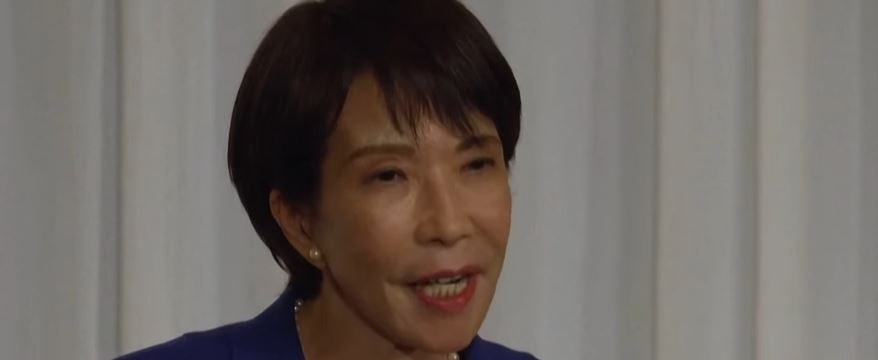
As global power balances shift, Sanae Takaichi has articulated a bold regional vision that extends beyond the traditional U.S.–Japan alliance. Her strategy, centered on a “Free and Open Indo-Pacific,” envisions Japan as a proactive coordinator of multilateral security and economic partnerships. Rather than relying exclusively on the United States, Takaichi aims to weave a broader regional alliance network linking democracies across Asia and the Pacific.
Takaichi’s approach is rooted in pragmatic realism. She recognizes that while the U.S. remains Japan’s closest ally, the regional environment demands a diversified framework of cooperation. By engaging Taiwan, Australia, India, South Korea, and even select ASEAN members, Japan can reinforce collective deterrence and economic resilience. This approach complements Washington’s Indo-Pacific strategy while enhancing Tokyo’s strategic autonomy.
In 2024, Takaichi introduced what she called a “quasi-alliance network” — a structure of interlinked defense and economic relationships built on shared democratic values. During her visit to Taipei that year, she emphasized that Japan’s cooperation with Taiwan and other partners “does not replace the U.S. alliance; it amplifies it.” Her message was clear: Japan must not be a secondary actor, but a regional shaper capable of sustaining stability even if U.S. priorities fluctuate.
This vision aligns with the principles of the Quad alliance — the U.S., Japan, India, and Australia — but Takaichi seeks to push it further. She advocates for expanding the framework to include advanced technology coordination, joint military logistics, and humanitarian disaster-response systems. Under her guidance, Japan has also intensified defense cooperation with the Philippines and Vietnam, including capacity-building for maritime surveillance and coast-guard modernization. These initiatives collectively reinforce Japan’s role as a central node in the Indo-Pacific security architecture.
Economically, Takaichi’s regional diplomacy aims to secure resilient supply chains independent of geopolitical pressures. Japan’s partnership with India on rare-earth mining, Australia on hydrogen energy, and Taiwan on semiconductors demonstrates a shift toward strategic diversification. Such cooperation reduces dependency on China while ensuring the region’s economic security. It also aligns closely with Washington’s Indo-Pacific Economic Framework (IPEF), ensuring Japan remains a trusted bridge between the U.S. and its Asian partners.
Takaichi’s emphasis on values-based diplomacy also strengthens Japan’s soft-power influence. She promotes democratic governance, women’s empowerment, and rule of law as pillars of Japan’s regional engagement. Her speeches often highlight Japan’s moral responsibility to support nations facing coercion or disinformation. This normative leadership reinforces Japan’s reputation as a credible and principled partner — one that acts not out of power ambition, but regional stewardship.
However, this assertive regional strategy carries diplomatic risks. China views Japan’s expanding security partnerships — especially with Taiwan — as a direct challenge to its sphere of influence. Beijing has condemned Takaichi’s Taiwan outreach as interference in its “internal affairs.” To manage this, Takaichi has pursued a delicate balancing act: deterring aggression through strength, while avoiding open confrontation. She frequently underscores that Japan’s Indo-Pacific strategy is “inclusive, not exclusionary,” inviting even China to cooperate on global issues like climate and infrastructure if conducted transparently.
Another challenge lies in resource allocation. As Japan expands its regional commitments, maintaining focus and budget discipline becomes crucial. Takaichi’s government must ensure that multilateral engagement does not overextend Japan’s defense or economic capacities. Still, her broader goal remains clear — to elevate Japan’s diplomatic agency from follower to co-architect of Indo-Pacific order.
In the eyes of U.S. policymakers, Takaichi’s multi-alliance approach is both strategic and complementary. By assuming greater regional responsibility, Japan reduces the burden on Washington and enhances the alliance’s sustainability. As former U.S. Ambassador Rahm Emanuel remarked in 2025, “A confident Japan strengthens America’s position in Asia.” This recognition underscores that Takaichi’s assertive diplomacy, far from undermining the alliance, actually reinforces it.
Ultimately, Sanae Takaichi’s regional vision redefines Japan’s identity as a leading Indo-Pacific power. Through diversified alliances, technological partnerships, and values-driven diplomacy, she is positioning Japan as a stabilizing force in an increasingly fragmented world. Her strategy signals a historic evolution — from dependence to leadership, from alliance participant to alliance architect — marking a new chapter in Japan’s global role.
Conclusion – The Future of U.S.–Japan Relations in the Takaichi Era
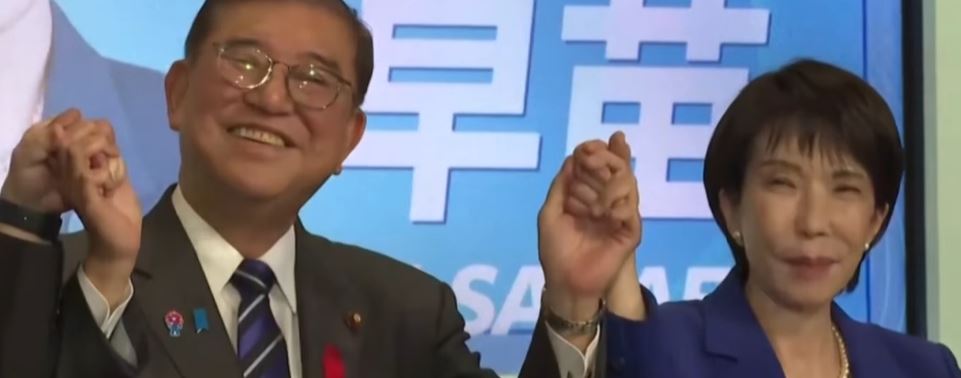
As Sanae Takaichi continues to shape Japan’s political and diplomatic landscape, the U.S.–Japan relationship stands at a historic turning point. Her tenure represents not a departure from the alliance, but a transformation of its character — from dependency to equality, from passive cooperation to active co-leadership in global affairs. The Takaichi era redefines Japan’s role in the Indo-Pacific and beyond.
For decades, Japan relied on U.S. protection as the foundation of its postwar order. Now, under Takaichi’s leadership, the alliance is evolving into a partnership of shared responsibility. She envisions a Japan that contributes more strategically — through defense modernization, technological innovation, and regional diplomacy — while maintaining alignment with Washington’s long-term objectives. This recalibration reflects both necessity and maturity: Japan can no longer afford to be a subordinate power in an increasingly multipolar world.
At the heart of Takaichi’s vision lies the principle of mutual respect. She believes that an enduring alliance must be based on equality and trust, not dependency. By strengthening Japan’s defense capabilities and economic resilience, she aims to make Tokyo an indispensable pillar of Indo-Pacific security. Her approach has already resulted in deeper cooperation on advanced technologies, joint military planning, and shared deterrence strategies against emerging threats such as cyberwarfare and space militarization.
Economically, Takaichi’s policies are setting new standards for economic security and technological sovereignty. By aligning Japan’s industrial strategy with that of the United States, she is helping to create a dual economic engine for the free world — a network of trusted partners capable of sustaining supply chains and innovation outside the influence of authoritarian powers. This transformation underscores a key reality: economic stability is now inseparable from national defense.
Yet, the road ahead is not without challenges. Takaichi’s strong nationalist rhetoric and emphasis on autonomy may occasionally unsettle allies, especially when historical sensitivities resurface or trade negotiations stall. Managing these diplomatic frictions will require skill, empathy, and continuous communication between Tokyo and Washington. However, such debates are signs of a mature alliance — one capable of adapting rather than eroding under pressure.
The broader Indo-Pacific context also adds urgency to this evolution. China’s assertiveness, North Korea’s provocations, and Russia’s renewed presence in the Pacific have made coordination between Japan and the U.S. more critical than ever. Under Takaichi’s watch, Japan’s growing defense role — supported by record-high military budgets and new counterstrike capabilities — complements U.S. deterrence strategies. Together, they form the backbone of a regional order built on stability, transparency, and shared democratic values.
In diplomacy, Takaichi’s emphasis on multilateralism has elevated Japan’s regional presence. Through engagement with Taiwan, Australia, India, and ASEAN nations, she has transformed Japan from a reactive actor into a proactive diplomatic leader. This networked approach enhances not only Japan’s influence but also the resilience of the entire Indo-Pacific system. It demonstrates that Japan can advance its interests while reinforcing global norms — a balance that serves both national and allied goals.
Looking ahead, the future of the U.S.–Japan alliance will depend on sustaining three pillars: strategic trust, economic interdependence, and shared democratic purpose. Takaichi’s policies strengthen all three, even as they challenge old assumptions about hierarchy within the alliance. If Tokyo and Washington continue to evolve together — embracing flexibility and mutual accountability — the partnership could become the model for 21st-century alliances worldwide.
Ultimately, Sanae Takaichi’s leadership symbolizes a new era for Japan — confident, self-reliant, and globally engaged. Her legacy will be measured not just by military or economic achievements, but by how she balances pride with pragmatism, and sovereignty with solidarity. For the United States, this evolution offers not a weaker ally, but a stronger partner; for Japan, it offers the chance to fulfill its long-held aspiration: to stand shoulder-to-shoulder with America as an equal architect of peace and stability in the Indo-Pacific.
The Takaichi era, therefore, is not merely a political shift. It is the dawn of a new alliance — one that reflects the realities of the modern world and the enduring bond between two great democracies.
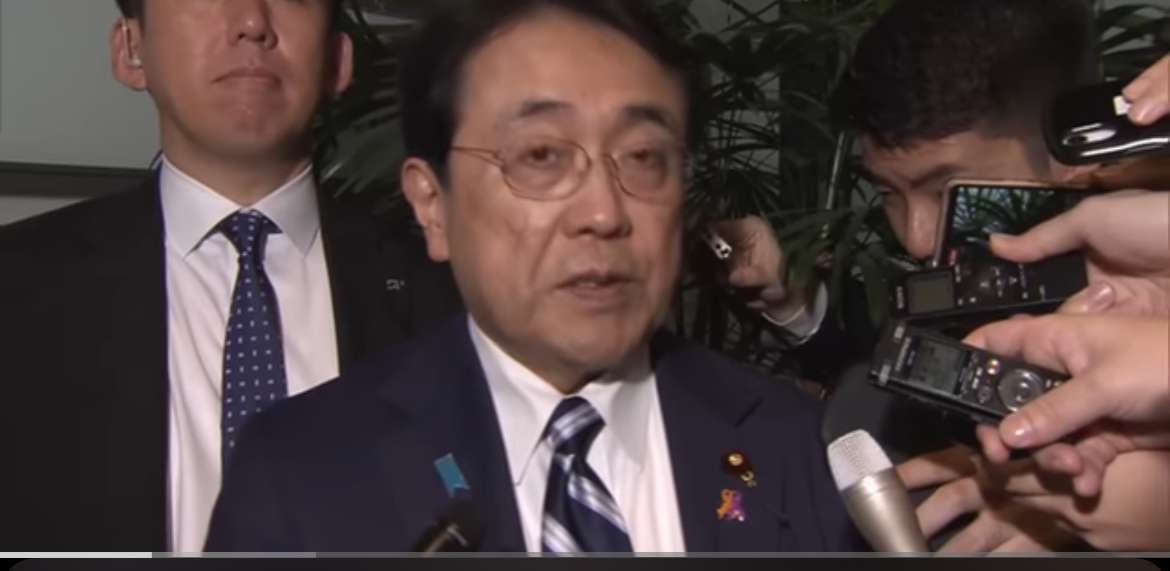

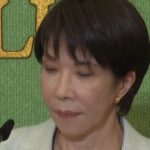
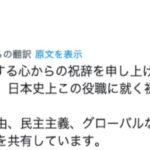
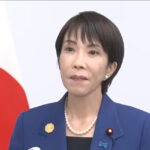
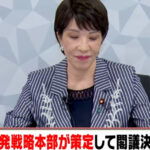
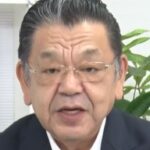
ディスカッション
コメント一覧
まだ、コメントがありません